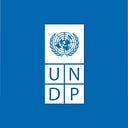UNDP powers health clinics in Chad
Chad has more than 14 million inhabitants, but only 2.2 percent of people have electricity, and they mostly live in cities.
Yet sustainable energy is essential for socio-economic development and, especially during the COVID-19 pandemic, critical to medical facilities. Without power, they cannot operate at night, refrigerate vaccines, or even pump water.
“My first child was born in this health centre. At the time, there was no light, and the midwife had to use a flashlight for the delivery,” says Minda Esther, a nurse at the Bongor Sieke health centre.
In 2018, the Chad Ministry of Health issued a policy to make primary health care accessible to everyone and open the path for the universal health coverage target of Sustainable Development Goal 3.
Despite this progress and an extended network of 51 health districts and more than 1,000 health centres, colossal efforts will be needed to achieve universal coverage in Chad. There are many reasons why disparities remain and basic needs are not being met. Rural infrastructure is sparse, dilapidated, under-equipped. Human resources are also insufficient, and staff training is inadequate. The consequences are notable. The infant mortality rate is close to nine percent, and life expectancy is around 54 years. This is a major concern for the Chadian administration.
Green and sustainable
Based on its experience with the ‘Solar for Health” Initiative and its support in the fight against malaria, tuberculosis, HIV/AIDS and seasonal diseases such as cholera and measles, UNDP, in partnership with the Chadian Ministry of Public Health, has financed a pilot initiative involving 150 health centres in 23 mostly rural provinces.
Solar photovoltaic systems were selected to supply health centres with a reliable source of energy and enable them to offer quality basic services, such as pre- and antenatal care for women, childbirth and medication storage, but also to help them respond adequately to public health issues such as malaria, and now, COVID-19.
Chad has enormous solar energy potential, and the photovoltaic systems can cover up to 60 percent of all of the needs of primary health care centres.
A promising pilot
To date, all facilities are functional in the 150 selected centres, as observed by a recent follow-up mission carried out by UNDP and the Chadian Ministry of Health. And medical staff are finding that they are able to do their jobs better, with far fewer challenges.
“We used to place vaccines in jars on wet sand to conserve them. There was no water fountain, so we had to disinfect medical instruments with water from the well. There were hardly any patients, because we only had flashlights to operate at night, even for childbirth. But for the last few weeks, we have been seeing five to 10 patients per night, and we have not encountered any difficulties related to lighting of the facilities. The solar panels also help us supply the water tower and refrigerate our vaccines. It is a great relief for us and for the inhabitants of the village,” says Guerolbe Wadou, manager of the Djarwaye Health Centre in Bongor.
Investing in both health and green energy is the very foundation of sustainable and inclusive economic growth and helps boost human capital, especially among young people. UNDP’s pilot project in Chad, soon to be scaled up nationally, aims to have catalytic effects on Chad’s path to achieving the SDGs and to support sustainable socio-economic transformation.
